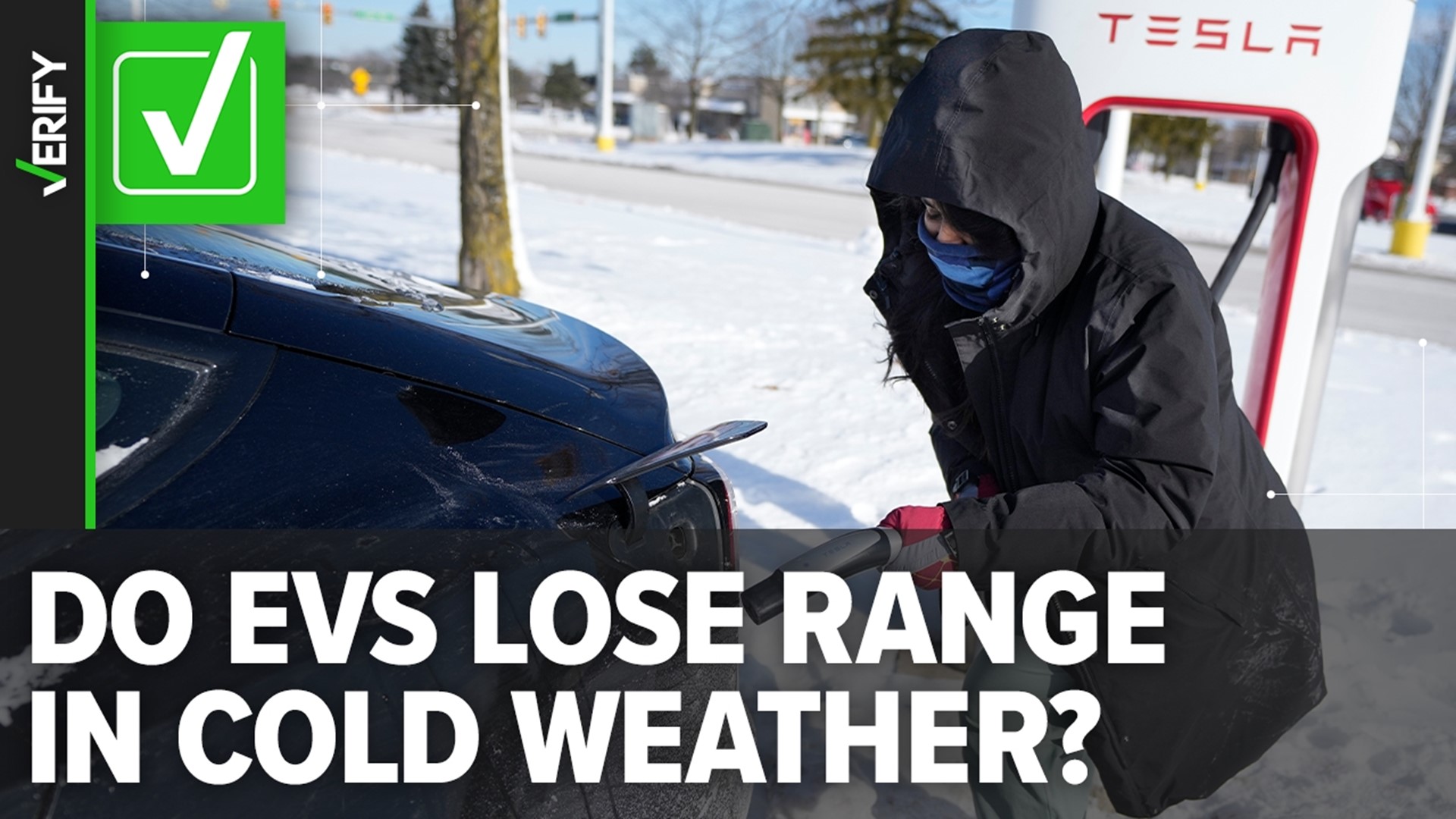Frigid temperatures in Chicago and other parts of the U.S. are making life difficult for some electric vehicle owners. A viral TikTok video with over 1 million views and several news reports claim Teslas have been struggling to keep a charge and find available charging stations in the cold.
VERIFY readers Marsha and Tori asked if it’s true that electric vehicles can lose a significant amount of their typical range, or distance they can travel before the battery dies, during the winter.
THE QUESTION
Do electric vehicles lose range in cold weather?
THE SOURCES
- Consumer Reports
- AAA
- Gil Tal, Ph.D., director of the Electric Vehicle Research Center at UC Davis
- Mark Ehsani, Ph.D., professor of electrical and computer engineering at Texas A&M
- Gabe Shenhar, associate director of the Auto Test Program at Consumer Reports
THE ANSWER
Yes, electric vehicles lose range in cold weather.
WHAT WE FOUND
There have been multiple studies evaluating the range electric vehicles can travel without a recharge in cold weather, all of which found that distance decreases as temperatures drop.
Tests conducted by AAA in 2019 found at temperatures of 20 degrees Fahrenheit, cars averaged only 59 percent of their driving range at 75 degrees.
Similar tests conducted more recently by Consumer Reports showed that cold-weather range has improved over the years, but still that “cold weather saps about 25 percent of range when cruising at 70 mph compared with the same conditions in mild weather.” For these tests, cold days averaged 16 F and mild days 65 F.
Much of the loss comes from the need to keep the driver comfortable. In gas-powered cars, heat is created naturally by the burning of fuel. But in electric cars, heat has to be created independently, by the battery.
“Electric cars are way more efficient, [since] most of the energy is being used to move the car, and there's not so much excess heat being created,” said Gil Tal, director of the Electric Vehicle Research Center at UC Davis. “So when we need to heat the cabin, where we sit, we actually need to use more energy. And that lowers the range of the car.”
One of the reasons the cold-weather range has improved over the years is the development of more efficient cabin-heating systems in newer models.
“In early electric cars, it was kind of almost a space heater that they put there, that was using tons of energy,” said Tal. “In modern electric cars, we use a heat pump. It's more efficient. And we use seat heaters and steering wheel heaters, so you don't need to heat, so much, the entire car.”
But it’s not just heating systems that can strain batteries. The cold weather alone takes a toll on the batteries’ performance. Ultimately, since batteries use chemical reactions to create power, and reactions occur more slowly in cold temperatures, there’s a limit to how much energy you can get from a battery in the wintertime.
“Lithium ion batteries have poor performance at cold temperatures,” said Mark Esahni, who runs the Power Electronics and Motor Drives Laboratory at Texas A&M. “The amount of energy that you can find in them is reduced. It's kind of like putting money in the bank and when you go to cash in you have access to a fraction of that money.”
Winter weather also tends to reduce vehicle performance in general, regardless of whether it’s electric or gas-powered.
“Cold weather affects EVs just like it affects other cars,” said Gabe Shenhar with Consumer Reports. “The lubrication material becomes stiffer, the tires are less pliable, so the car has to overcome more rolling resistance.”

